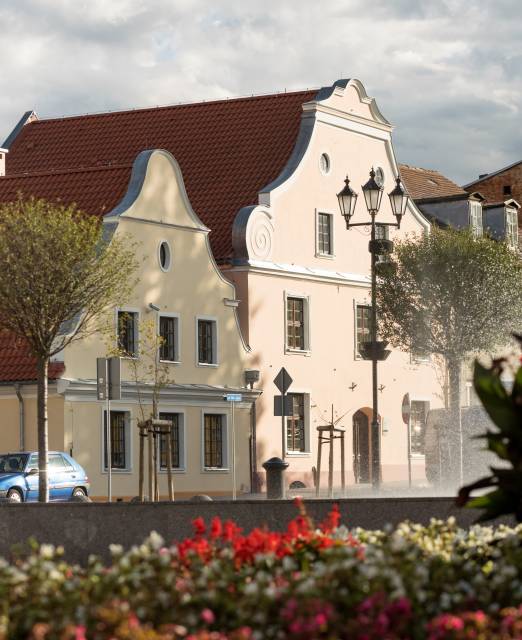In November 1918, Włocławek became part of Poland which regained its independence. Unfortunately, less than two years later, the Bolshevik War, which began in 1919, reached the city's borders. From 14 to 19 August 1920, an improvised garrison of the Polish Army, commanded by Colonel Wojciech Gromczyński, fought a ruthless battle with the professional troops of the 3rd Cavalry Corps Gaj Bżyszkian.
The battle, which resulted in heavy casualties, ended with the victory of the city’s defenders. To commemorate the heroism, the citizens of Włocławek erected a monument commemorating the defenders at the place where they were buried.
It was solemnly consecrated on 1 October 1922.
Until 1938 the town and the county belonged to the Warsaw Province, and on 1st April that year, due to the administrative reform, they became part of the Pomorze Province. Włocławek remained the capital of the Diocese of Kuyavia and Kalisz, known as the Diocese of Włocławek since 1925.
A symbol of the town's development was the town plan of Włocławek drawn up by Kazimierz Saski in 1924. It provided for the introduction of building zones and their functional differentiation. It provided for areas for public utilities and emphasized the improvement of the existing transport network.
Between 1918 and 1939, industrial construction was limited to a few new buildings. A year before the outbreak of the Second World War, there were about 150 factories in the city, representing the metal, food, ceramics, pulp and paper, chemical, wood and mineral industries. The city government also contributed to the economic growth, using its own funds to open the Kuyavia District Power Plant / in Polish: Kujawska Elektrownia Okręgowa / in 1928.
In addition, the road network was extended and repaired, and a water and sewage system were built. In 1937 a bridge over the Vistula was opened and named after Marshal Edward Rydz-Śmigły. Some new buildings were also built to Włocławek's infrastructure: the post office building, the social insurance office, the sports stadium and about a dozen school buildings.
The Catholic Church played an important role in the life of the town. Among its representatives were Father Michal Morawski, the author of a monograph on the town, Father Antoni Bogdański, a nationally known scout, and Father Stefan Wyszyński, the future Primate of Poland.
Włocławek was an important press and book publishing center. Already in the first period after regaining independence, 16 daily newspapers were published here. The Kuyavia Museum / in Polish: Muzeum Kujawskie / flourished, and in 1930 it was given a new building built from public funds. The Włocławek Rowing Club /in Polish: Włocławskie Towarzystwo Wioślarskie / developed its activities and in 1928 moved to a newly built base on Piwna Street. The Jewish club Makabi, which opened a sports hall on Królewiecka Street in 1922, was also very active. By the end of the 1930s, there were about 100 political, social, cultural and religious organizations in the city.



 Places
Places Guides
Guides Map
Map Outdoor games
Outdoor games Trails
Trails Events
Events Mobile app
Mobile app Contact
Contact


